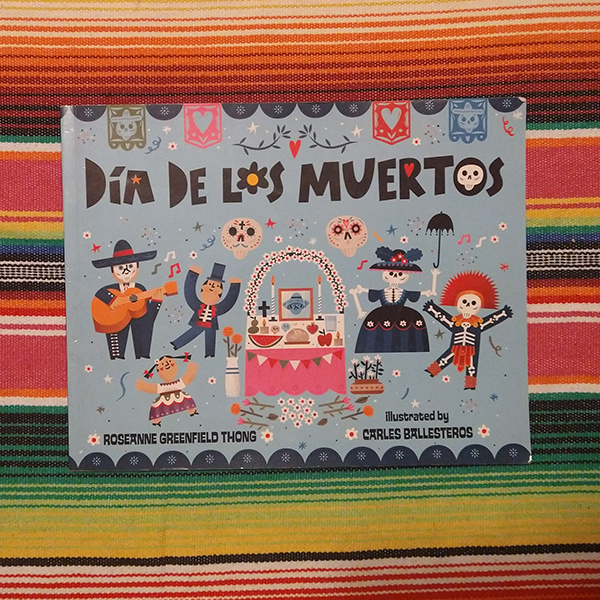This is my rant about why Brits should reclaim Thanksgiving. I have two book recommendations to help you learn the basics: The Thanksgiving Story by Alice Dalgliesh with Caldecott Honor winning illustrations by Helen Sewell, as well as Squanto’s Journey by Joseph Bruchac and illustrated by Greg Shed. Both of these books beautifully share a story of brave people who made amazing journeys and helped very different groups of people come together as friends.
British People Should Take Back Thanksgiving
by T.Q. Townsend
I’m an expat who lives in Leicestershire. I love it here. It’s a great place to raise kids. There’s lots of great stuff to do outdoors. And nobody talks politics. I am conspicuously American, a trait that is compounded by being the only Yank in my village other than my dual citizen kids.
I try to do my best to enhance the Special Relationship between our countries, mostly by making my husband cups of tea just the way he likes them, but also by introducing little bits of Americana that are compatible with British life. Things like Goldfish Crackers, meat loaf, and pumpkin bread have been eagerly adopted by my neighbours, and I even got a bunch of families to come play baseball on the village green on multiple occasions.
I don’t want to change Britain fundamentally, but there has been one thing that has been on my mind more and more the longer I live here. Y’all need to take Thanksgiving back. I feel like this shouldn’t be a hard sell. I don’t say this merely because I get a bit homesick every year on this holiday, and it’s very hard to celebrate properly on the fourth Thursday in November when my kids have a normal school day and all my friends have to be at work. It’s also because it’s legitimately a good idea. And you should rely on my authority because not only am I a real red blooded American, but I am also a descendant of Edward Doty, who not only helped celebrate the first Thanksgiving but was also the first person to be punished as a criminal in the Massachusetts Bay Colony.
Allow me to lay out the facts.
First, Thanksgiving started out as an English holiday. Way back at the start of the 17th century, the people who first partied with the Wampanoag tribe from what is now Massachussetts were English, having lived nearly two centuries before those dirty, dirty rebels sent that nasty note to poor King George III. (We can gloss over the part where they were kind of nutty religious extremists who thought the Puritains weren’t strict enough. Let’s just focus on the part where they all had a really nice time together eating gruel or whatever it was they had in the olden days.) So really, if you think about it, this holiday has always been yours to begin with.
Second, British people love a roast. I don’t mean verbal razzing, although you like that too. I mean delicious savory food slow cooked for hours, served with copious side dishes and a cauldron of gravy. I do not have to expend any energy making the case for having a roast followed by ample desserts. You already take any excuse you can get to do this.
Third, you get something else you already like: a bank holiday. I know that Thanksgiving can feel a little unnatural at first because it falls on a Thursday, rather than on a Monday as the good Lord intended. But this is actually a pretty good deal. Because everyone is so overstuffed with turkey and pie and football and freedom, quite a lot of employers give up and also declare the following Friday to be a loss. Some schools in America even give kids the whole week off, adding a bonus half term holiday to the calendar. In late November it’s getting pretty dark and cold in this country. It wouldn’t be so bad to have a few extra days to party.
Fourth, Thanksgiving does a great job of holding back Christmas. Look, Christmas is the king of holidays. It’s the best day of the year. It also starts way too early. By having Thanksgiving to focus on, stores are forced to hold back on Christmas displays for a few more weeks and we can all keep “All I Want for Christmas is You” out of our heads just a little bit longer.
Finally, it’s fun. Thanksgiving is a casual holiday. A time devoted to gathering with people you actually like, unlike the other holidays that force you to mix with people who say crazy things on Facebook but have to be invited because of shared DNA. It’s about gathering with friends in comfy clothes, watching the big game, eating some good food, and having lots of laughs. It’s a great low-pressure setting for someone to introduce a new significant other to the extended family. It’s a time to invite a lonely neighbour or a new acquaintance over so they can make some friends. It’s a time for grandma to show off her pie baking skills, and for a pack of children to play outside until they go a bit feral. It can be a bit rowdy, which not all British people will instantly be comfortable with, but I have found that with sufficient gravy and pie, folks around here will put up with just about anything.
Most American expats here in Britain celebrate Thanksgiving on the Saturday after the official holiday, so that there’s time for a proper feast. That works, but I hope that I’ve done a little bit to convince you that this holiday isn’t quite so foreign as you may have thought. It’s my hope that in a few years, you’ll be just as overstuffed with pumpkin pie as I am every November.


